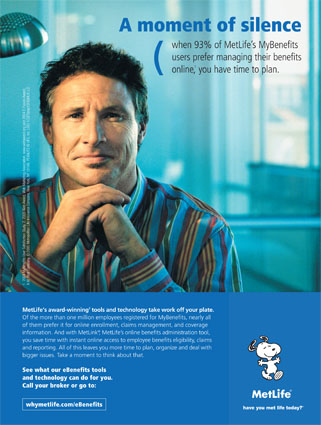Archive for the ‘Microstock’ Category
BOO-HOO
July 4th, 2017I don’t want you to think I’ve got a fixation about this, but I believe that photographers are undervalued and underpaid.
And who’s to blame for this? Why, photographers of course.
Once upon a time every branch of every bank had a bank manager. He (always he) would look after your money, let you take some of it out, and very occasionally, after terrifying scrutiny, he may have allowed you a loan.
And once upon a time photographers would sign up with picture libraries, who would license their pictures to publishers and advertisers etcetera and pay them half the net sales receipts.
Then some clever clogs in banking introduced the concept of Products. No longer content with banking your money, they now wanted to sell you Insurance and ISAs and Credit Cards and Loans and Investments and Mortgages and PPI and God knows what else. At the moment my bank offers six different current accounts. And the bank manager is no more.
The same thinking infected the Picture Library business. Instead of simply managing photographer’s image rights, they introduced Royalty Free images and Fixed Prices irrespective of usage and Microstock and Subscription Packages and Credits until the poor photographer no longer knew which way was f22.
The microstock concept was irresistible. Pile ’em high, sell ’em cheap. They sold in their millions — who wouldn’t buy a picture for a dollar, even if you had to spend ten dollars and buy nine pictures you didn’t need to get there? Photographers flocked to upload their images, with sales coming every month instead of once or twice a year. No worry that the sales were in cents and pence rather than dollars and pounds — someone out there liked my picture!
Now that happiness has been tempered. It’s great to make a sale, and it’s fantastic that your photograph has been seen by 40,000 people. Or 400,000. Or 4 million.
But when your photograph has been seen by 400 million people and you’re looking at a cheque for a measly £18 you might feel a little short-changed. But that’s what you signed up for. Brexit means Brexit. Royalty-free means Royalty-free. Microstock means micro-earnings — for the photographer.
The pleasure of seeing your work published palls after you realise everyone else involved is staggering to the bank under the weight of sackfuls of cash.
This has come about because a number of excellent photographers have been shocked to find the beautiful images which they uploaded to microstock sites, full well knowing the prices that would be charged, were actually sold to professional picture buyers. I wonder what they expected?
What they expected was a few pence per image and lots of sales. What they got was something like £18 per picture, and exposure to 400 million people who are using Windows 10. But no picture credit.
Yes, the canny purchaser was Microsoft. If there are photographers out there prepared to offer their work for peanuts, then pay them peanuts. No matter that Microsoft turned over $85,320 MILLION last year. Why pay more if it’s being offered so cheaply?
I can’t say that had Microsoft come browsing around fotoLibra we’d have made millions for our contributors. I can safely say we would have charged much, much more and I believe Microsoft would have been happy to pay it. We’ve sold half-a-dozen images to Microsoft’s excellent search engine Bing and they paid us £175 each.
What’s the answer? Don’t undervalue your work. Put it with an agency that respects your value and your worth. You may not see sale notifications quite so frequently, but when they do come in they’re in pounds rather than pence.
Source material came from Journalisten and PetaPixel, with thanx to Petax Howl.
The Worm Glances Back*
May 2nd, 2014In March we were contacted by a picture buyer who was working on a set of booklets for a health clinic. She wanted 100 pictures of various foods and people. The pictures were to be used on company brochures, their website and information booklets. She said her budget was €100, and would we like to offer her a price?
“Is that your budget per image?” enquired Yvonne innocently.
The buyer responded “You can’t be serious — April 1st is next month. I think the megabuck days are over. We have a US site giving us the deal for $175.”
So we lost the job and suffered a little humiliation into the bargain.
But is she right? Are the megabuck days over?
Yes, if there ever were megabuck days. We never experienced them.
Before digital replaced film — perhaps the most crushing disruption ever experienced by any peacetime industry — buyers would spend £1,000 on a front cover image. As regular readers will know, I am no photographer, but a magazine paid me £1,600 for four of my distinctly average photographs in the ’90s — for the simple reason that they couldn’t find them anywhere else.
That’s what all picture libraries want to be able to to do — supply images that can’t be found anywhere else.
But that’s not always what the market wants or needs. Like most markets, the lowest common denominator is king. If you’re selling insurance, houses or holidays to the over-60s, then you have to use a photograph of a smiling, handsome, healthy grey-haired couple. I believe it’s enshrined in American law.
As a result microstock sites are awash with such images: happy couples running hand-in-hand through the surf, a phalanx of ethnically correct young executives smiling at the camera. They sell over and over again. But if you need a picture of the ruins of St Peter’s Seminary, Cardross, then your average microstock agency ain’t gonna help.
The difficulty is that buyers have rapidly become accustomed to paying a dollar for any picture, so when we try to charge real money for a real image, they throw their hands up in horror. My dream conversation:
THEY: “£100? You’re havin’ a laugh. I buy me photos from fotoLia for a dollar each.”
WE: “Then may I suggest, Sir, that you purchase said image from the establishment wot you mentioned.”
THEY: “But they haven’t got one.”
WE: “That’ll be £100 then please sir, ay theng yow.”
It doesn’t often happen. Shame.
But yesterday we heard news of a fightback by photographers. fotoLia is a microstock agency with a name suspiciously reminiscent of a longer-established company (called fotoLibra). It has millions of royalty-free images, and it recently launched a new initiative called The Dollar Photo Club, where they sell ten images for $10 (it works out at $10 for the image you actually want, and they throw in nine more).
This has proved one step too far for some people. A group has been set up by Olga Kostenko, a Ukrainian photographer (I’m amazed she has the time at the moment) called Boycott fotoLia.
It first appeared in the Stock Photography Buy and Sell Images group on LinkedIn, but mysteriously it has now been taken down. Nevertheless their English language website is still active, and as of today it claimed that 432,563 images had been removed from fotoLia in the past week, and 176 photographers had removed their entire portfolios. It’s a drop in the ocean for fotoLia, but the worm, if not actually turning, is at least glancing back.
Kostenko writes: It is clear that the final target of Fotolia owners is not a new market but a takeover of the current stock market. Fotolia management tries to convince us that they are care about us, the content creators. They tell us that it is profitable not only for Dollar Photo Club and Fotolia. They tell us that it is profitable for authors as well. But it is not. DPC incomes will grow by pulling existing buyers away from other stock agencies, not by finding new buyers. DPC’s goal is get a big bite of the stock pie, cut out this market, move to a completely new arrangement with buyers and crush its competitors. And all of this is done with our unconditional support. Because at this moment we don’t have rights. We cannot refuse to allow our images to be used on DPC. All our images from Fotolia are on DPC as well. We don’t have the choice to add or delete our images from DPC.
FotoLia responded to Will Carleton’s Photo Archive News, and you can read their reply here.
If you are a contributor to fotoLia, are you happy with this development?
Have you removed your images?
*prior to The Worm Turning?
A Million Free Images
May 28th, 2013One member was so incensed by my last posting — about a potentially dangerous scam which could ensnare any of us — that he quit fotoLibra. “Your blog post wasn’t about photography!” he thundered. He was right, and I promised him that the next posting would be about photography.
I’m sorry to disappoint, because this still isn’t about photography — it’s about commerce, and ownership, and copyright, and images, and sales, and royalty free. I really shouldn’t write prescriptive pieces about photography because I am possibly the least skilled photographer who will read these words (though I will confess I’m a dab hand at Photoshop) but I do know what the picture market wants, needs and expects.
It’s hard enough selling images at the best of times, so my heart sank a little further in this worst of times when I saw an announcement from a microstock agency that they had nearly a million images to give away for free. We haven’t got a million images yet, and we don’t want to give them away. We’re asking money for ours.
For a large sector of the market, Price is the only consideration. I met an illustrated book publisher a few years ago who’d been to China and had picked up a set of DVDs of hundreds of thousands of free-to-use hi-res photographs. “We don’t need you any more,” he said crushingly. “We’se making books from dese images what we got.” (There’s a lot of class in publishing). Sadly, he isn’t in business any more, because the public stopped buying his repetitive titles.
All the same, a million free images? That’s absurd. So I signed up to the site to have a nosey around. To sign in, you create a username, supply an email address and a password, and click on the verification email. Then you choose your picture. Then the interrogation starts. Full name? Full address? City? Zip? Phone? Grandmother’s eyes? I dutifully complied — it’s rather more strenuous than registering on fotoLibra as a buyer — and selected an image to download.
Those of you with long memories may recall a little run-in fotoLibra had with English Heritage a couple of years ago when they told us to take down images of Stonehenge we were selling. You can read about it here and here. So I looked on Stock Free Images for photographs of Stonehenge. I got 34 results, not all of Stonehenge, of course.
© Galleria | Dreamstime Stock Photos & Stock Free Images
Here’s one I downloaded for free. It’s not bad. It’s not great, either, with visible signs of compression at full size, but it’s good enough for perhaps 70% of usages. Of course when the search results come up, the first images you see are the pictures that Dreamstime wants to sell you. Dreamstime is a microstock agency which owns Stock Free Images. So Free Pictures! is the bait to attract buyers to Dreamstime. Underneath their premium images you see the lesser ones which SFI are offering for free. I wonder if English Heritage will be chasing them?
I’d also like to know why the photographer J. Wallace (for much of the metadata remains with the image) allowed his or her photograph, taken on June 28th 2008 with a Canon EOS 400D, to be given away for free. We have three photographers named J. Wallace. I hope it’s not one of them.
Harking back to my illustrated book publisher friend, there’s enough content here to satisfy the least demanding critic. There are 645 free photographs of Golden Retrievers, for example. If I was in the business of publishing doggy calendars, why not start here? I only need 12 adequate images, after all.
Is it any wonder that buyers on a budget will look at sites like these first? This is a world where Adequate is good enough. On the other hand, to be tempted to sites like fotoLibra, buyers have to be able to
a) find images they can’t find elsewhere
b) be assured that the image quality is absolutely top of the range
c) ask our photographers for pictures they can’t find
We can’t compete on price. We haven’t got a million murky pictures to give away. So we have to offer a service which corporations like Dreamstime can’t dream of.
And we do. We’ll bend over backwards to accommodate our clients’ wishes, which is why fotoLibra sends out regular little notes from Jacqui with her impossible demands for our photographers.
But when the actual content is deemed so trivial and unimportant by companies like Dreamstime that they can simply give it away, I just think it’s a sad world for photographers and the picture business.
Don’t you? And what can / should we do about it?
How Much Do Microstock Images Really Cost?
November 12th, 2012by Gwyn Headley
Managing Director
“Pile ’em high and sell ’em cheap” was the old Tesco motto, and that’s how buyers get seduced by microstock. All you can see when you first look is A DOLLAR PER PICTURE. Irresistible, thinks the picture buyer’s boss or client. Use them.
Look what happens if we pick a fotoLibra picture at random. Let’s chose FOT373296. I’m throwing a dice to get this number, which is why there’s no zero in it. It turns out to be a photograph of Rowley Waterfalls in Lancashire by Simon Wimbles. Now say I am a publisher and I need a photograph of Rowley Waterfalls. Let’s try Shutterstock. They have none.
Let’s try a few other big name microstock agencies.
iStockPhoto (owned by GettyImages): none
fotoLia (wonder what inspired that name?): none
Dreamstime: none
OK, that was too hard. It seems that the only picture of Rowley Waterfalls you can buy is from fotoLibra. And it will cost you more than a dollar.
Let’s try FOT432625. This is an aerial shot of Heathrow Airport by Michael Webberley. That’s better — the microstock agencies are sure to have Heathrow. And they do:
Shutterstock: 43 images, 2 aerial shots
iStockPhoto: 37 images, 1 aerial shot
fotoLia: 31 images, no aerial shots
Dreamstime: 54 images, 2 aerial shots
I swear to you that this image was chosen at random. Tiddly fotoLibra, by comparison, has 183 photographs of Heathrow.
So if I want an aerial shot of Heathrow for a double page spread in my glossy magazine, here’s my selection from Shutterstock:


Neither of these are very good. They don’t show me Heathrow Airport. Let’s try Dreamstime:

Two like this. Portrait, not landscape.
iStockPhoto:

More reservoir than airport. Anyway, I’ve had enough, the boss has told me to buy from those places which have pictures for a dollar, so here goes.
I don’t want to subscribe to buying 1,000 pictures a month, I only want one high-quality aerial shot of Heathrow Airport. Once I’ve waded through all the options, these are the prices I think I can get these images for:
Shutterstock: Not allowed to buy a single image. I can however buy an enhanced licence for two images for £119. So this picture will cost me £119.
iStockPhoto: I need to buy credits. This costs 20 credits. I can’t buy 20 credits, I can only buy 26 credits for £31. So this picture will cost me £31.
fotoLia: Nothing that I wanted, but if I needed an image at this size, it would cost me 16 credits. 20 credits are £21, so that’s what it would cost.
Dreamstime: 54 images, 2 aerial shots
Selling Photographs through Flickr and Getty Images
June 23rd, 2010by Gwyn Headley
Managing Director
There’s been much contention recently over the deal made between the snapshot sharing site Flickr and the behemoth of the picture library stock agency world Getty Images.
A couple of years ago the companies agreed that Getty could have their pick of the millions of images uploaded to Flickr. Of course not all of them are snapshots — some probably approach professional standards. But now Flickr has announced their “Request To License” programme. This is what they said:
“Starting today in the Flickrverse [bleagh!] Flickr members and visitors can work with each other through a new program with Getty Images called “Request to License”. We’ve built this program on the success of our launch of the Flickr Collection on Getty Images just over one year ago.
“So, how does it work? Under the Additional Information heading on your public photo pages you’ll see a “Want to license” link. Only you see this link. Visitors to your photos won’t.”
There is whipped up concern that Flickr members have no idea how to value their images and that Getty will rip them off. This is very, very unlikely.
Our concern at fotoLibra is that it’s Getty who have no idea how to value their images, as this week a Getty spokesperson was quoted by Amateur Photographer as saying:
“Flickr contributors will receive 30% of the fee and the average price for Rights-managed images is around $500 (£335). Royalty-free images are licensed at set prices based upon the file size the customer purchases. Flickr contributors will receive 20% of the fee and the average price for RF is around $200 (£134).”
(Incidentally fotoLibra member photographers get 50% of the sale fee and Platinum members get 60%.)
Well, that’s news to us. Getty’s ‘average’ prices, that is. I have lost count of the number of potential clients who have refused to deal with fotoLibra because “you’re so much more expensive than Getty Images.” Yet our average price for Rights-managed images is around $76 (£51), compared to their quoted $500 (£335). So maybe someone isn’t telling the full, entire, unvarnished truth here. And it’s not me.
If those quoted prices really are true, why hasn’t fotoLibra been swamped with buyers? Our photographers are every bit as good as theirs, and our average price is 15% of their quoted average price. That is a staggering difference.
I very much doubt that Getty Images averages $500 per rights-managed image sale. How I wish that were true! Perhaps it’s all smoke and mirrors, like those famous microstock offers of a dollar for a picture.
Microstock: why would a reputable company do this to themselves?
April 7th, 2010by Gwyn Headley
Managing Director
The following blog posting was written by Chris Barton, managing director of PhotographersDirect.com. You can read the original post plus the comments it has triggered here.
We’re posting it on the fotoLibra Pro Blog (with his permission) because Chris has articulated the basic flaw in microstock and low value photography, and his blog needs to be read by photographers and picture buyers alike. When people don’t care — as these picture users clearly don’t — then cost becomes the sole criterion. Value means nothing.
Chris writes:
I was looking at a company website today, with the possibility of putting some business their way, when something I saw there made me cringe involuntarily.
They say a picture is worth a thousand words. Well, this one has a lot to say. It says microstock. It says perfect-people perfect-world lowest-common-denominator cookie-cutter pile-them-high sell-them-cheap image.
Why would a reputable company want to be associated with those words?
The problem with this image is that it has that…. ‘Deja Vu’ feeling to it, and for a good reason.
So, do these guys come as a package? Have they moved on from “Best of the Web” to form the Corporate Team at “123 Greetings”?
As you would expect from such a high powered team, they speak fluent German…
… and some oriental language – you could probably find out which one if you bump into them at the:
and of course they come with a:Now, this may all just seem a bit of a joke, just poking fun at the short-sightedness of companies using cheap microstock images to represent their… well, image, but when it gets visibly misleading:
About us? They didn’t do a very good job of spotting this trouble on the horizon…
maybe financeme needs better financing if they don’t have any headshots of their own staff and can only afford microstock images…
I think that should read ‘Company Oversight’
…you end up questioning the credibility of the company itself.
I don’t believe these people really work at Targetti Poulsen…
…so why would I trust anything else that Targetti Poulsen have to say?
And if I am wrong and they do work there, are Targetti Poulsen aware that their ‘people’ moonlight at:
On a side note, ‘Bad Credit Cosmetic Surgery Loans dot co dot uk’ wins this month’s prize for “dodgiest domain name”.
My final example I think rounds off this topic in an appropriate way:
from their track record, getting these ‘good people’ to stay does not look promising…
Okay, so HireView Magazine used the same silly microstock image. But that photo at the top? That’s them. That’s the team at HireView. I am confident about that because it isn’t a perfect-people perfect-world lowest-common-denominator cookie-cutter pile-them-high sell-them-cheap image that has spread across the internet like a nasty virus. It is an honest picture, and because of that, I think I can trust HireView Magazine.
Which is more than I can say for the rest of these companies.
Companies need to think more carefully about the images they use. I suspect many businesses are unaware that the photos their designer has sold them are spread a-dime-a-dozen across the web. There is a good reason that microstock’s original catchphrase was “the designer’s dirty little secret”.
At the very least, reputable companies should look at using rights-managed rather than royalty-free images, so they will KNOW if the image is being used elsewhere and whether a competitor (or sometimes something even worse: “Cosmetic Surgery for mens, Get your Dream Shape like stars”) is using the same ‘team’ to represent their company. Or maybe they should follow HireView Magazine’s lead and actually hire a photographer to take real pictures of real people who work at their company. They may not be perfect, they may cost a bit more, but they will look genuine, and honest. And not just… cheap.
Thank you Chris — firstly for your permission to reproduce your blog here, and secondly for your righteous indignation at the short term, penny-pinching attitude of so many organisations. To mangle John Donne: “Every microstock sale diminishes us, because we are part of the photographic community.”
Standards? What standards?
More Microstock Moans
March 16th, 2010by Gwyn Headley
Managing Director
I really can’t get my head around microstock websites. The bit I can’t understand is why the participating photographers think so little of their work that they’re prepared to value it so cheaply.
Someone recently asked on a Canon forum “Has anybody had experience of using Fotolibra to sell pictures?” Having just helped send out over 100 sales notifications so far this week I thought I could answer that, but my application to sign up to the forum has not yet been verified.
Someone wrongly assumed fotoLibra was a microstock site and posted an answer linking to three blogs recounting experiences with these kinds of agencies. They weren’t universally positive. Out of interest, here they are:
Microstock Tips | Pixels Away | Erik Kolstad’s Blog
They are not right up-to-the-minute (the market has almost stiffened and died since these figures) but none the less I am astounded at how little these supplying photographers are prepared to accept. Have they no pride in their work?
One wrote:
I’m a climate scientist in Bergen, Norway. Starting in 2008, I have been contributing to a number of stock photography sites. I started out with iStockphoto, and after a while I joined Shutterstock and Dreamstime as well. Now I have quit Shutterstock, largely because of their ridiculous royalty scheme (they pay you $0.25 for each customer download). I’m currently trying out SnapVillage, Fotolia, 123rf.com and the German agency PantherMedia.
I couldn’t help but respond, although unfortunately I do sound a bit sniffy from time to time:
May I correct you? You are not actually trying out stock photography sites, you are trying out MICROstock photography sites.
Proper picture libraries such as fotoLibra.com sell fewer images than the microstock sites because we value the work of photographers more highly, and therefore charge accordingly.
You would probably only sell a fiftieth of what you could sell on a microstock site through fotoLibra.
But you would probably earn a hundred times as much.
Our average picture sale for a rights managed image is €56 / $77 / £51. Standard fotoLibra photographers get 50% of that.
So one fotoLibra sale would normally net you $38.50 / £25.50. That’s the equivalent of 154 sales through Shutterstock.
I think that’s a very compelling argument. I have no doubt the microstock apologists will disagree.
Cheap Photographs
April 24th, 2009by Gwyn Headley
Managing Director
Anyone who’s read more than two or three of my posts will know what I think of the microstock system. There always has to be a loser, and in the case of microstock the loser is the creator, the artist — that is to say, the photographer. But as a responsible company we have to evaluate the business model and see if it could work for us. It could only work if the photographers knew EXACTLY what they were letting themselves in for. fotoLibra would have been a lot richer a lot quicker if we’d promised untold riches to our members from day one. And who knows, maybe that’s the right way to untold riches, riches beyond the dreams of aviaries, as Jimmy Edwards memorably said.
At the London Book Fair I stopped by a stand where they were displaying lots of illustrated books. The conversation went something like this:
“Hello, I’m from fotoLibra, we’ve got hundreds of thousands of just the images you need for your books.”
“What price?”
“Well, it rather depends on the usage. You see …”
“What cheapest price?”
“Ah, if you buy lots of images I’m sure we can offer a most attractive deal …”
“You tell cheapest price!”
A figure was mentioned. A laugh was heard.
“You see dat book?” An encyclopaedia was indicated. “Dat book, I buy all picture in dat book ten pound. Not one, all picture in book.”
WHAT I SAID
“Oh, well done you. Jolly good show! Very clever.”
WHAT I SHOULD HAVE SAID
“Well, you certainly get what you pay for, don’t you? I’ve never seen such unadulterated, badly printed crap. You should be prosecuted for first degree murder to trees. And if that’s the care and attention you devote to your images, I hate to think where the text originated, or what awful, erroneous message it’s getting across.”
But I’m British.
So I didn’t.
Microstock: Pounds Not Peanuts
April 24th, 2008by Gwyn Headley
Managing Director
I had a rant about microstock agencies a while back in my previous blog. You should still be able to read the post here.
18 months on and my feelings haven’t changed. They’ve hardened a bit, though. What has grown is my feeling of bafflement.
Like a car, a company has four wheels to keep it on the road:
1. Its shareholders
2. Its staff
3. Its customers
4. Its suppliers
Virtually all companies share these elements. Lose one element, and it’s less stable. Lose two, and to my mind it’s distinctly wobbly.
Microstock agencies sell bulk quantities of cheap pictures. The business model is typically this: the customer pays a subscription to download a number of pictures over a period of time. A typical example is $999 to download 1,000 pictures — a dollar an image. You can then do what you will with them.
This is fine for travel companies, advertising and design agencies who just need generic shots of smiling people and sandy beaches.
What baffles me firstly is where do these agencies get their images? What intelligent photographer will upload pictures to a site where, if they get a return at all, it would be in the region of 20 cents a picture? And then they’d have to wait until they’d sold enough pictures to trigger a payment.
So that’s one wheel off the wagon. The thinking is clear: “Let’s ignore the photographers. They’re just the suppliers. We’ll make big promises and pay them peanuts.”
Yet the photographers keep on coming. They keep on sending pictures to these sites. Why do they do it? Why? Nobody likes to admit making mistakes, but why do lemmings spring irresistibly to mind?
Now the next wheel, the customers. When you sell any old picture to any old client, either you or the client can run into trouble, as this famous article in the Wall Street Journal pointed out when Met Life and Pfizer (promoting their best known product) ran ads featuring the same photograph of a happy middle aged man. Here’s the Met Life ad; the Viagra one has long been withdrawn:

That was the funniest microstock cock-up — you’d think that companies the size of those two would be prepared to spend more than a dollar a picture to get exclusivity.
Before the gent with the tiger in his tank and the life insurance policy turned up, we enjoyed Everywhere Girl, a heartwarming story of a one-off payment.
This of course is the advertising world. In book publishing, the area I know best, there are small publishers and book packagers fighting to compete with the Pearsons, Random Houses and John Wileys of this world. They don’t pay royalties, so they can’t compete through their authors. But they can buy images, and they can produce lavish, nicely designed picture books to sell to wholesalers at cripplingly low prices — typically 15% of the cover price.
The big market for these is America, and over there the prices are exactly the same as they are here, except they put a dollar sign in front of the US price and a pound sign in front of the UK price.
Because they can. Never mind that the pound is worth 2 dollars.
So a $20 book in the US, which would look like a £20 book in the UK, has to be supplied for £1.50. Out of that £1.50 has to come the cost of the images. So what do the packagers do? They go to microstock agencies.
It’s great as a temporary solution at the bottom end of the market. But the awful time has already arrived when the book buyer at Jovanovich, Scribner & Borzoi Inc. looks up, shakes his great shaggy head and points at a rival publication using exactly the same pictures from the same picture library. The market can stand only so many picture books on China and Ireland, and if the public finds the same images in different books those goddam purses are gonna slam shut.
I know of one small book packaging company sinking back exhausted onto the ropes. We tried to sell them pictures, but the director looked at me hollow-eyed and told me
“We have one member of staff doing nothing but downloading images from microstock subscription agencies, 10 hours a day, five days a week. We have a deal that allows us to download as many as we can in a month.”
Well, that was a business plan, of a sort. But I’m not sure that it worked. I didn’t see her or her company at the London Book Fair.
The only answer is exclusivity. That doesn’t come so cheap. It’s not an option in the microstock world.
Like Dutch Elm Disease, the virus is slowly killing its host. So that’s the second wheel off the wagon.
Only the staff and shareholders will be left. What will they have to share? Especially as their wheels only handle steering and direction, rather than propulsion.
Perhaps we’re seeing a tectonic shift opening up in the picture library world as decisive as the division between TV and radio, hardback and paperback, cinema and DVD, microstock and rights-managed.
Because it is now possible to buy a picture for a dollar (albeit that the small print says you only get that price if you buy $1000 worth of images to begin with) the market begins to think that that is what a picture is worth. Even publishers accustomed to paying fair prices for rights-managed imagery are coming under pressure from their bosses who have received ‘dollar a picture’ junk mails from these organisations. They realise that microstock is not the way to go if the business needs to be taken seriously, but the picture buying budgets have been cut, and cut again. One major new buyer told me:
“I am always keen to know about any new (to me) picture sources, but I must also say that we work on very tight budgets here. We tend to need to find sources where can pay £30–£40 ($60-$80) per picture whatever the size it is used at… (inside the book). For some bulk deals where we use many pictures we negotiate to pay even less – for example on the raft of big encyclopedias that we are doing at the moment, we have deals with picture sources to pay £15 ($30) per picture when we use over 600… Perhaps we could make it work in the future, but I thought I’d make you aware of just how restricted we are on budgets.”
I believe if the labourer is worthy of his toil, then he should be rewarded. I believe in royalties for intellectual creation. I don’t believe that everything created after 1923 should be in perpetual copyright. I believe that 70 years after the creator’s death is too long a protective period. I believe our photographers should earn more than $15 for a picture sale.
Maybe these are too many beliefs and not enough realism. But I realistically know the market will not carry on paying for the same old microstock stuff again and again. There’s been a huge shake up in the picture business in this century — fotoLibra was the first all digital picture library, so we were at the heart of it — and what we wanted to do was to democratise the stock agency world so everyone had the chance to sell their images.
I now want to know what drives a photographer to accept 20 cents for the sale of a picture.
We want our members to get paid pounds, not peanuts.














